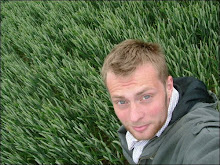Books and Adventures starts an in-depth look at the work of the late Patricia Wrightson (1921-2010) this week.
I read her trilogy The Song of Wirrun for the first time this year, immediately after hearing news of her death in March. It’s an absorbing, sophisticated fantasy quest rooted in Aboriginal mythology.
A few comments from my earlier blog post are here. I wrote it based on the books I happened to be reading at the time, Wirrun and John Gordon’s The Giant Under the Snow, which draws on British legends for its spooky, dark adventure. Now, looking back, my comments on ‘the power of the land’ seem rather naïve in the face of long and deep-rooted debates about the place of Aboriginal culture in Australian children’s writing.
I was keen to move beyond the snapshot of Wrightson’s work offered by the obituaries and, from my limited Pommie perspective, try to understand the issues raised by her use of indigenous Australian myth. In fact, I was compelled: these books were just so gripping for me as a reader, I needed to know why they were out of print and so controversial. Over the next few posts on the blog I hope to give an outline of the critical debates on Wrightson for readers as new to her novels as I was.
Mark Macleod, Patricia Wrightson’s friend and publisher at Random House, was kind enough to join me for an e-mail discussion of her work and legacy. I started by asking him about the importance she held for Australian children’s literature in the postwar period, as both a writer and as the editor of Australia’s School Magazine.
He explained how Wrightson acted as ‘an enabler, whose passionate commitment to making stories with an Indigenous theme part of the literary mainstream helped prepare readers for the many Indigenous and non-Indigenous artists who followed. The cross-cultural partnership of Dick Roughsey and Percy Trezise, who changed Australian picture books in the 1970s, for example, found an audience already used to thinking of Indigenous subject matter for children as exciting, dramatic and edgy. That is at least partly due to the high profile success of Wrightson as a 'real author' in the education market before them.’
Yet somehow Wrightson has become a writer less read than revered: a name to conjure with, but one whose books are difficult to obtain.
‘It was significant that news of her death was carried in Midwest newspapers and regional networks in the United States, but barely rated a mention in Australia,’ Mark Macleod suggests. ‘I think we are still vaguely embarrassed or guilty about the idea that she might have been just another one in a long line of exploiters of Indigenous people - but in many cases that view is not the result of close acquaintance with the texts themselves.’
So why are these fantasy adventures by a heavyweight of children’s literature so hard to get hold of these days? And what is there to say about her use of Aboriginal myths and beliefs in those fantasies?
Over the next few blog posts, I want to look a bit deeper at Patricia Wrightson’s work and legacy. As critic Brian Attebery points out in a 2005 article, ‘the borrowing of one culture’s traditions by another is a serious and risky business’, with a danger that privileged white societies ‘acquire whatever is of value in indigenous culture while consigning the bearers of that culture to invisibility or extinction.’
So how might we read Patricia Wrightson’s relationship to the Aboriginal myths in her writing - appropriation, advocacy or something else entirely?
We'll be looking at this question next time on the blog. For part two of this feature, click here.
Subscribe to:
Post Comments (Atom)

Fascinating post, looking forward to the next in the series.
ReplyDelete